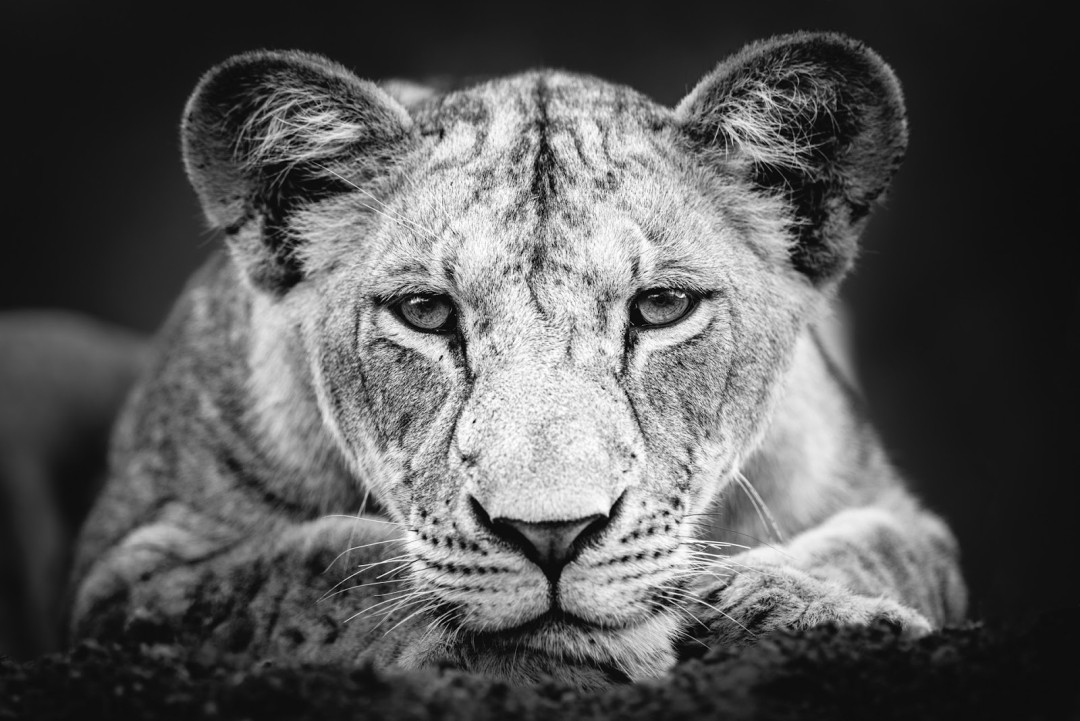A lion locks eyes with the camera. In that frozen moment, captured in a new black and white lion print titled “Looking at Me Looking at You”, Swedish wildlife photographer Johan Siggesson invites viewers to reflect on something deeper than beauty. The photograph is not just an artistic rendering of Africa’s most iconic predator. It is a quiet challenge. Who is really watching whom? And what does that gaze tell us about the uncertain future of lions in the wild?

The image, released recently as part of Siggesson’s fine art wildlife series, was taken in Tsavo West National Park in Kenya. It shows a young male lion seated calmly in the open landscape. His stare is direct and calm, his posture relaxed but alert. Shot from a low angle with a medium-angle lens, the composition brings the viewer eye to eye with the animal. “I wanted the image to feel intimate, almost confrontational,” says Siggesson. “We often look at wildlife as observers. This image turns the tables. It asks what happens when the wild looks back.”
This young lion is one of the lucky ones. With good fortune and protection, he may live to maturity. But many will not. The African lion, once widespread across the continent and parts of Asia and Europe, is now facing rapid decline. According to the International Union for Conservation of Nature (IUCN), fewer than 20,000 lions remain in the wild. Over the last century, they have disappeared from more than 90 percent of their historic range.
The IUCN currently lists lions as “Vulnerable” on its Red List, but the picture is more dire in certain regions. In West Africa, the subspecies Panthera leo leo is now considered “Critically Endangered.” Human-lion conflict, habitat loss, a shrinking prey base, and illegal wildlife trade have all contributed to the decline.
Key figures:
- Estimated global wild population: fewer than 20,000 (World Wildlife Fund, 2023)
- Historic range loss: 92 percent since the early 1900s (Panthera.org)
- West African lions: fewer than 400 individuals remain
- Most remaining lions live in protected national parks or private reserves
Lions often clash with rural communities who live near protected areas. When lions attack livestock, retaliation is common. In some regions, traditional cultural practices and lack of economic alternatives make coexistence difficult. Without meaningful community engagement, many conservation programs fall short.
Siggesson believes photography can play a subtle but important role in shifting perspectives. “Photographs can become quiet advocates,” he says. “They don’t preach. But they linger. They invite people to pause and reflect.” His goal is not just to document wildlife, but to offer moments of connection. A still image can make the viewer feel present. In that moment, distance disappears.
That connection is especially important now, as the public becomes increasingly distanced from the natural world. While documentaries, social media, and tourism have made wildlife more visible, they have not necessarily made it more understood. Lions, in particular, suffer from dual reputations. To some, they are noble symbols of wilderness. To others, they are dangerous pests or commodities to be hunted or traded.
Still, there are signs of hope. Community-based conservation initiatives across Kenya, Namibia, and Botswana have helped stabilize or grow local lion populations. Programs like Lion Guardians train local Maasai warriors to monitor lion movements and prevent conflict. In Namibia, conservancies managed by local communities share in ecotourism revenue, giving them a reason to protect wildlife rather than remove it.
Photography has long played a role in conservation movements. From early black and white prints that inspired the U.S. national park system to modern social media campaigns, visual storytelling can bridge emotional and intellectual gaps. “A single image can’t stop extinction,” Siggesson admits, “but it can start a conversation. It can make people care.”
This new image is released as a limited-edition fine art print, part of his ongoing effort to raise awareness through visual storytelling. Siggesson says this work is his way of honoring the animals and wild spaces that continue to inspire him.
“Looking at Me Looking at You” is not an action call. It does not offer statistics on poaching arrests or demand donations. Instead, it invites reflection. The image leaves space for the viewer to decide what it means to coexist with something wild, powerful, and increasingly rare.
“He looked at me,” Siggesson says of the moment he took the photo. “And I had to wonder what he saw.”
Media Contact
Company Name: Johan Siggesson
Contact Person: Media Relations
Email:Send Email
Country: United States
Website: https://www.johansiggesson.com/
